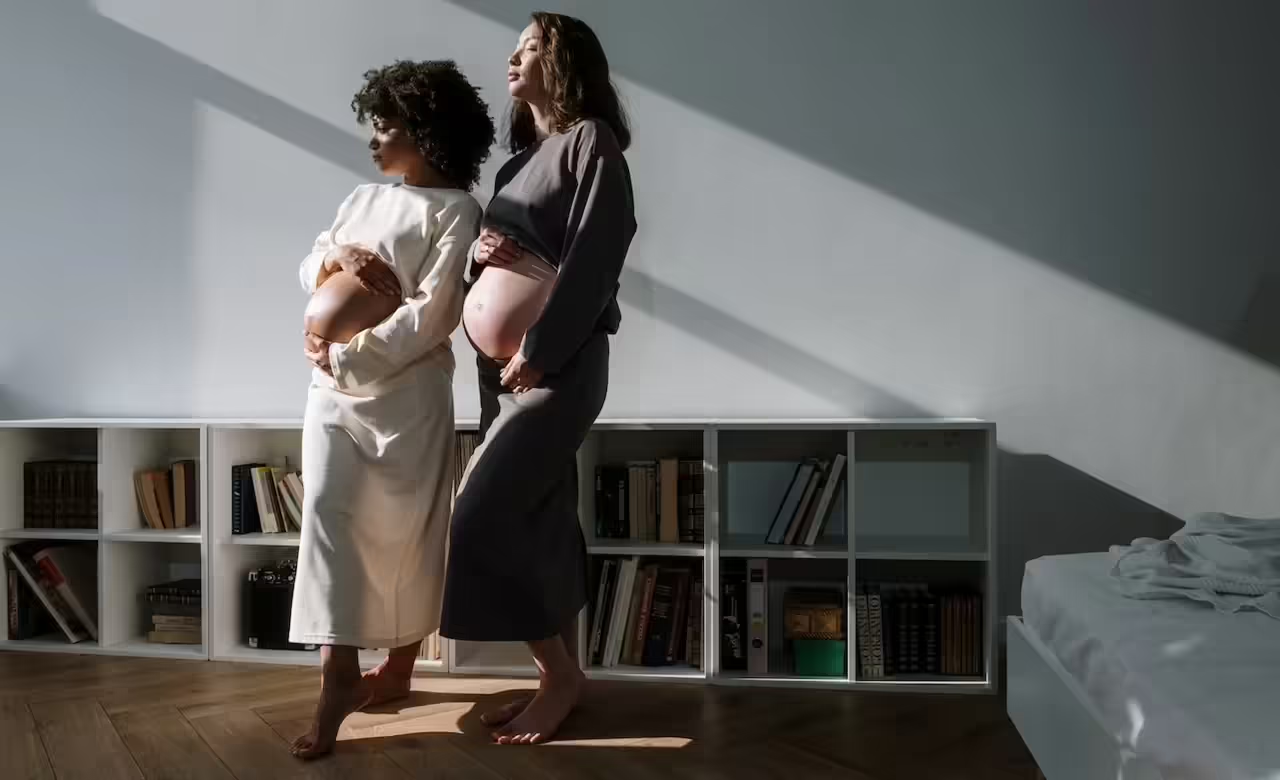
Pregnancy is a period of significant physical and emotional changes in a woman’s life. While it is common to pay attention to overall health during this stage, one aspect that is often overlooked but is of vital importance is the choice of appropriate footwear. The increase in weight, alteration of the center of gravity, and physiological changes in the feet make the selection of suitable footwear essential to ensure the comfort, safety, and well-being of the expectant mother. In this article, we will delve into the factors to consider when choosing footwear during pregnancy and provide a detailed exploration of the types of footwear recommended for this special stage.
Physical Changes During Pregnancy
Before delving into the recommended types of footwear, it is crucial to have a deep understanding of the physical changes a woman undergoes during pregnancy and how they affect her feet and her ability to walk comfortably and safely.
1. Alteration of Center of Gravity
As the fetus grows in the uterus, the weight in the front of the mother’s body increases significantly. To maintain balance, the body responds by arching the spine forward, resulting in a condition known as lumbar hyperlordosis.
This lumbar hyperlordosis places an additional strain on the legs and feet, which, in turn, increases the risk of losing balance while walking. This is especially important as pregnancy progresses, and the curvature of the spine becomes more pronounced. The expectant mother may notice a change in her posture as she tends to tilt her head and shoulders backward to counteract this alteration in the center of gravity. Therefore, the choice of suitable footwear becomes essential for maintaining stability and preventing potential falls.
2. Changes in the Feet
Throughout pregnancy, hormonal changes influence the body’s ligaments, leading to their relaxation. Additionally, the increased weight places pressure on the feet, resulting in several changes in foot structure and function.
These factors can lead to a reduction in the arch of the foot, meaning that the feet can become flatter and wider. Swelling, especially in the third trimester, is common and can further affect the shape and size of the feet. It is important to note that these physiological changes can vary from one woman to another, but in general, feet tend to widen and become more sensitive during pregnancy. These changes can impact the choice of footwear, as shoes that were once comfortable may no longer be so.
What to Consider When Choosing Footwear During Pregnancy?
The selection of suitable footwear during pregnancy is crucial to ensure the comfort and safety of the expectant mother. Making the right choice of footwear can not only prevent foot discomfort but also help prevent back pain and potential injuries. The following are the key factors to consider when selecting footwear during pregnancy:
1. Support and Safety
Footwear should provide adequate support for the feet and allow walking with confidence. Given that the expectant mother’s center of gravity is altered, it is essential to have footwear that offers a solid base and prevents the foot from sliding or shifting while walking. This is crucial to prevent back pain and reduce the risk of falls, which can be especially dangerous during pregnancy.
2. Protection Against External Aggressions
Footwear should also offer protection against external aggressions. This includes protecting the feet from the cold. During pregnancy, it is essential to keep the feet warm and dry, as wet feet can increase the sensation of cold and the risk of cold-related foot conditions. To avoid moisture and cold, it is recommended to use waterproof footwear that allows the feet to breathe and prevents the accumulation of moisture inside the shoe. This is particularly important in cold climates or during the rainy season.
Additionally, footwear should protect the feet from possible injuries caused by sharp objects or irregularities on the ground. The expectant mother should be prepared to walk on various surfaces and under different conditions, so the footwear should provide a protective barrier against external elements.
3. Appropriate Materials
Ensuring that footwear is made from suitable materials is crucial. Synthetic fabrics, which tend to be stiffer, can cause chafing and discomfort in sensitive feet during pregnancy. Instead, it is recommended to opt for natural and semi-synthetic fabrics that are more flexible and better adapt to the shape of the foot. Breathable materials are especially important to avoid moisture buildup inside the shoe, which could lead to foot health issues.
4. Size and Comfort
Footwear should be wide enough to avoid constriction of the foot. During pregnancy, it may be necessary to purchase a larger shoe size due to swelling, especially in the third trimester. There is no need to worry if the foot size increases during pregnancy, as it is likely to return to its usual size after giving birth. It is essential for the expectant mother to feel comfortable while walking and not experience any restrictions on her feet.
5. Heel Height
The choice of heel height is a critical factor. It is important to avoid high heels during pregnancy, as the body’s weight tends to rest on the front of the feet. This can lead to excessive strain on the leg muscles and an increased risk of discomfort or injury. On the other hand, completely flat footwear is not the best choice either, as it can increase muscle overload in the legs. The ideal heel height is three to four centimeters, providing a balanced combination of comfort and support.
6. Non-Slip Sole
Safety while walking is a top priority during pregnancy, as the risk of slipping and falling can increase due to altered balance. Therefore, it is essential for footwear to have a non-slip sole that offers proper traction on a variety of surfaces. The non-slip sole ensures that the expectant mother can walk confidently and reduces the risk of potential accidents.
7. Laces and Fastening
As pregnancy progresses, tying shoe laces can become uncomfortable and challenging. Therefore, it is preferable to opt for footwear with velcro or elastic closures that are easy to adjust without additional effort. This not only provides comfort but also allows for a custom fit to accommodate foot swelling.
8. Sports Footwear
If the expectant mother plans to engage in exercise during pregnancy, it is essential to use appropriate sports footwear. Sports footwear should be flexible and have an air cushion that slightly elevates the foot, providing additional cushioning and support during physical activity. Furthermore, sports footwear should offer ankle support to prevent injuries and provide greater stability.
9. Beach and Pool Footwear
For enjoying the beach or pool during pregnancy, it is important to use suitable footwear for these conditions. The use of rubber footwear that securely holds the foot, such as rubber sandals, is recommended. These options offer proper traction on slippery surfaces and protect the feet from potential injuries. In contrast, flip-flops, which are often less secure and do not effectively support the foot, are not the best choice for aquatic activities.
Conclusion
The choice of suitable footwear during pregnancy is essential to ensure the comfort and safety of the expectant mother. Physical changes in the body, such as alterations in the center of gravity and foot swelling, make the choice of footwear critical for preventing pain and injuries. Selecting appropriate footwear significantly contributes to the mother’s well-being and, ultimately, to the healthy development of the baby. Following the recommendations outlined in this article will ensure a more comfortable and safe experience for expectant mothers, allowing them to enjoy this unique stage of life with peace and well-being. The health and safety of the mother are fundamental for a successful pregnancy and







